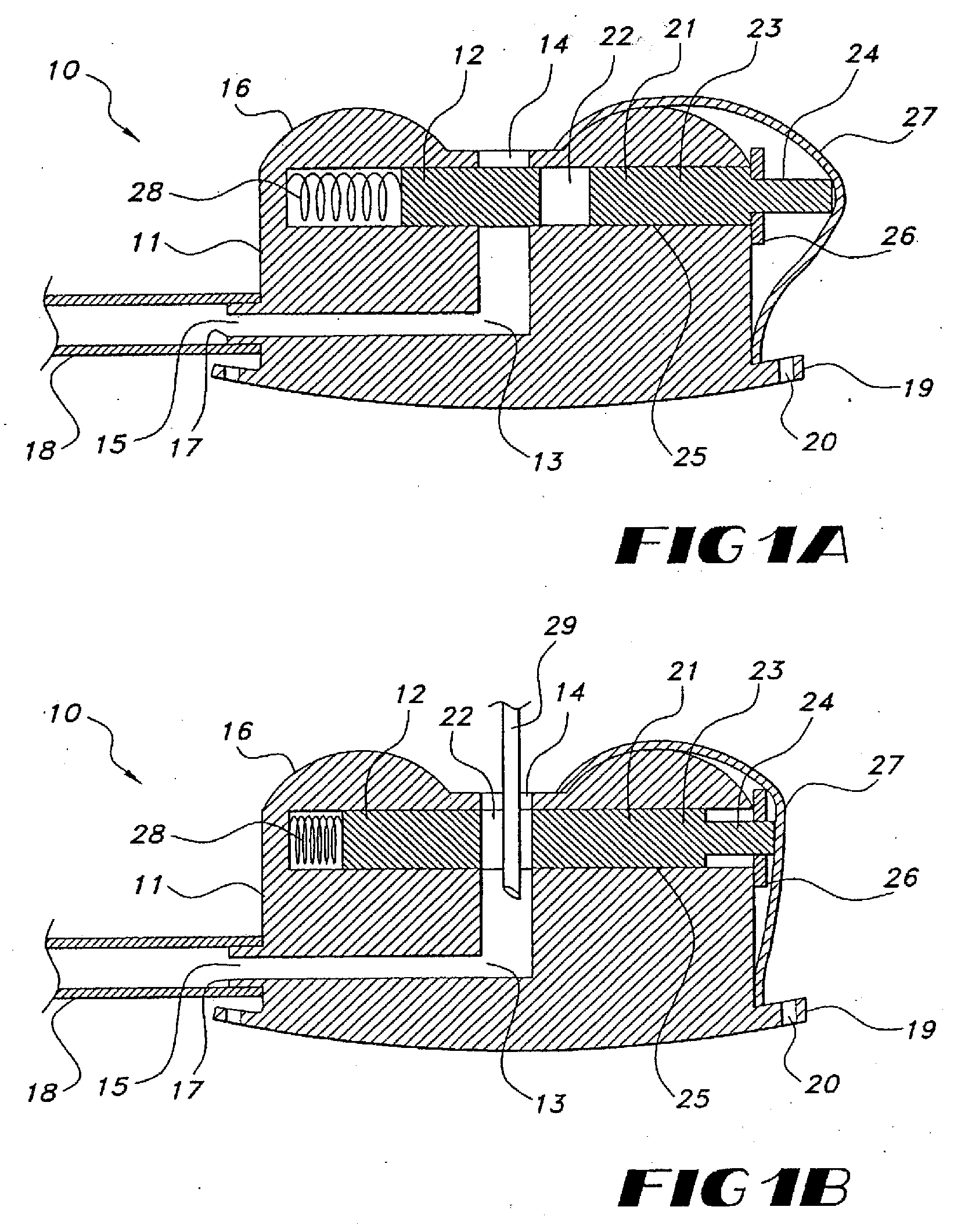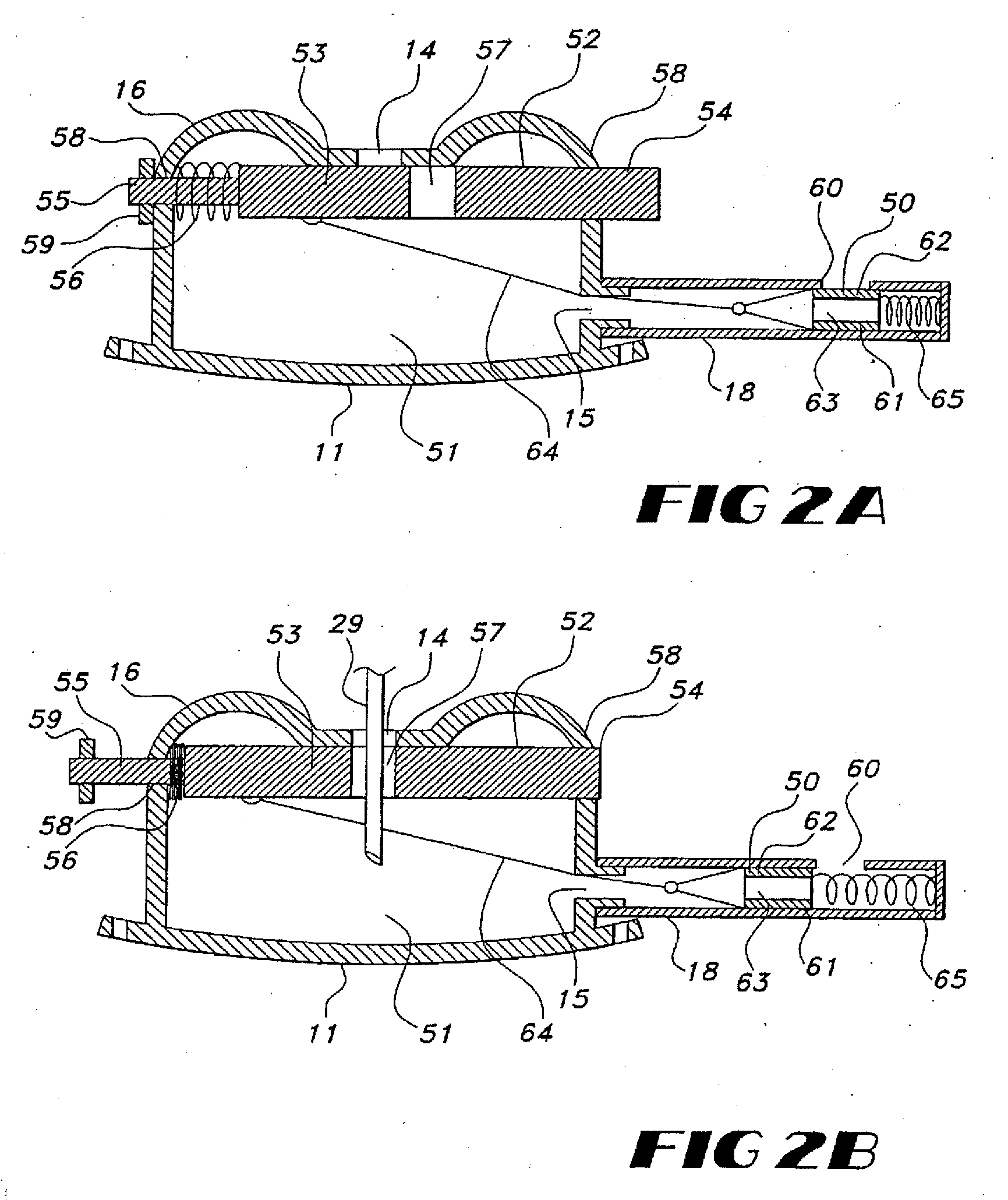Implantable Vascular Access Device
a vascular access device and implantable technology, applied in the direction of medical preparations, infusion needles, other medical devices, etc., can solve the problems of hemodialysis procedures, chronic skin damage at the same location, and deterioration of rubber membranes
- Summary
- Abstract
- Description
- Claims
- Application Information
AI Technical Summary
Benefits of technology
Problems solved by technology
Method used
Image
Examples
Embodiment Construction
[0022] Referring to FIGS. 1A and 1B, an implantable vascular access device formed in accordance with the present invention is shown. The vascular access device 10 is designed to be surgically implanted under the skin and generally includes a housing 11 and a valve 12. The housing 11 and the valve 12 may be made from any suitable biocompatible material possessing sufficient hardness to resist being damaged or gouged by needles or other devices which will be repeatedly inserted into the device. Plastic constructions are advantageous in that they are inexpensive to fabricate utilizing conventional molding techniques and are available in a variety of biocompatible materials. Surgical metals, however, are also suitable.
[0023] The housing 11 includes an interior chamber 13 formed therein, and an inlet 14 and an outlet 15 extending through an external surface 16 of the housing and communicating with the interior chamber. The outlet 15 may be formed with a cuff 17 to facilitate connection ...
PUM
 Login to View More
Login to View More Abstract
Description
Claims
Application Information
 Login to View More
Login to View More - R&D
- Intellectual Property
- Life Sciences
- Materials
- Tech Scout
- Unparalleled Data Quality
- Higher Quality Content
- 60% Fewer Hallucinations
Browse by: Latest US Patents, China's latest patents, Technical Efficacy Thesaurus, Application Domain, Technology Topic, Popular Technical Reports.
© 2025 PatSnap. All rights reserved.Legal|Privacy policy|Modern Slavery Act Transparency Statement|Sitemap|About US| Contact US: help@patsnap.com



